Abstract
A descriptive retrospective study was undertaken to evaluate 250 records of dog bites collected by the Guelph Health Unit during 1986 and 1987. The average reported dog bit rate was 160/100,000 people per year. The lower extremities were bitten in 31.3% of cases, hands 26.5%, face 19.7%, torso 10.4%, and arms received 8.4% of bites. Owners of biting dogs were located 97.6% of the time, and 70% of these dogs were vaccinated for rabies. Incidents occurred 60.1% of the time within the dog's home territory, 14.4% on the street, 13% on a neighboring property, 6.3% in parks, 2.4% around schools, 1.4% at stores, and 2.4% others. Forty-one percent of attacks were unprovoked, but most attacks could be explained by the classifications of canine aggression. Although several breeds had high bite rates, only mixed and German Shepherd breeds had a population attributable fraction in excess of two percent.
Full text
PDF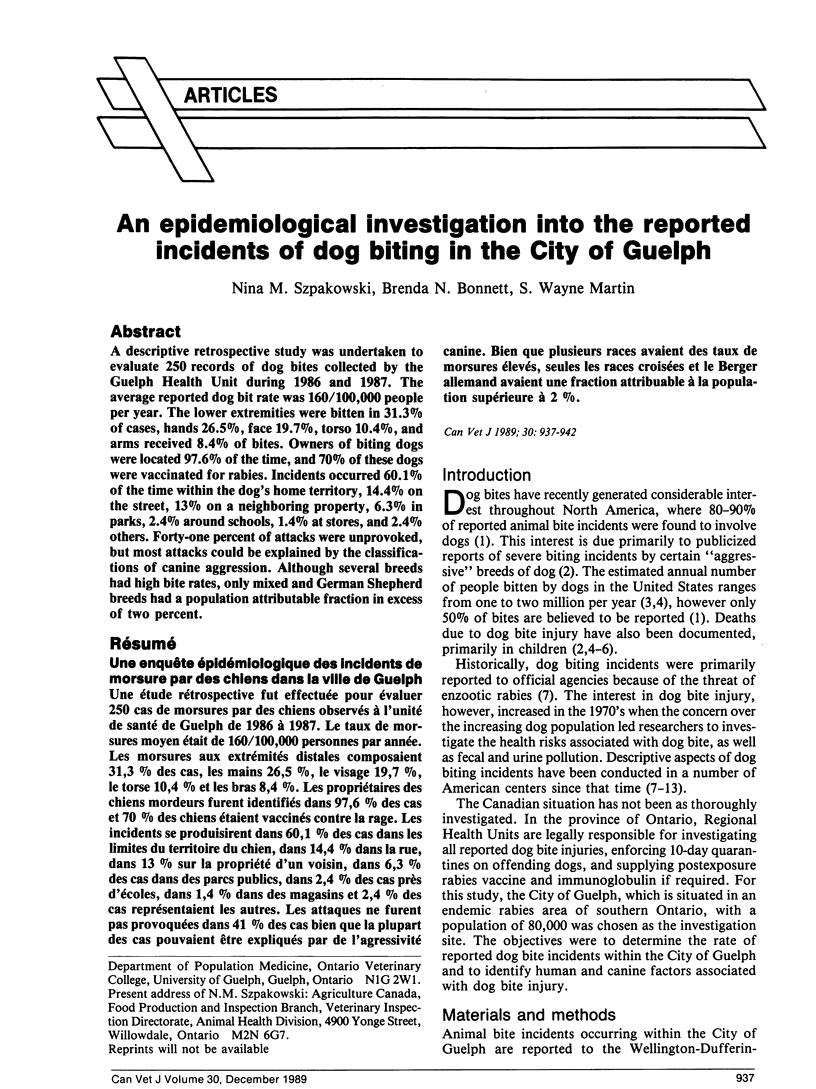
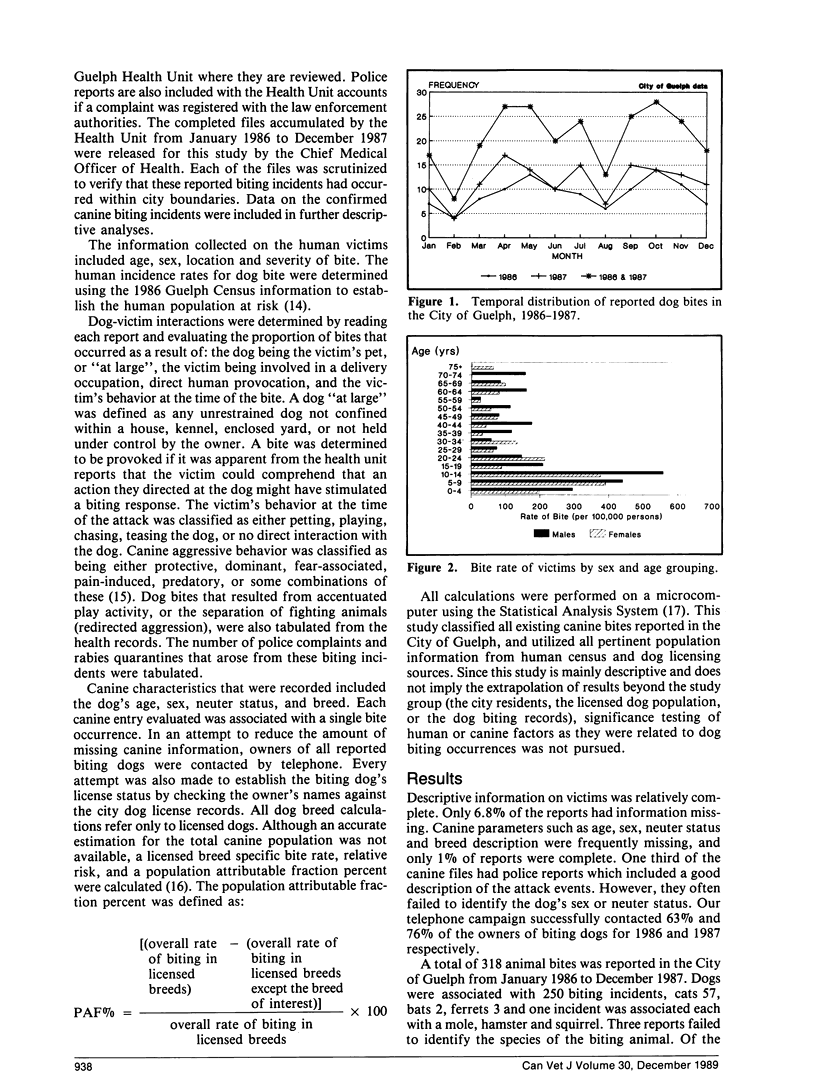

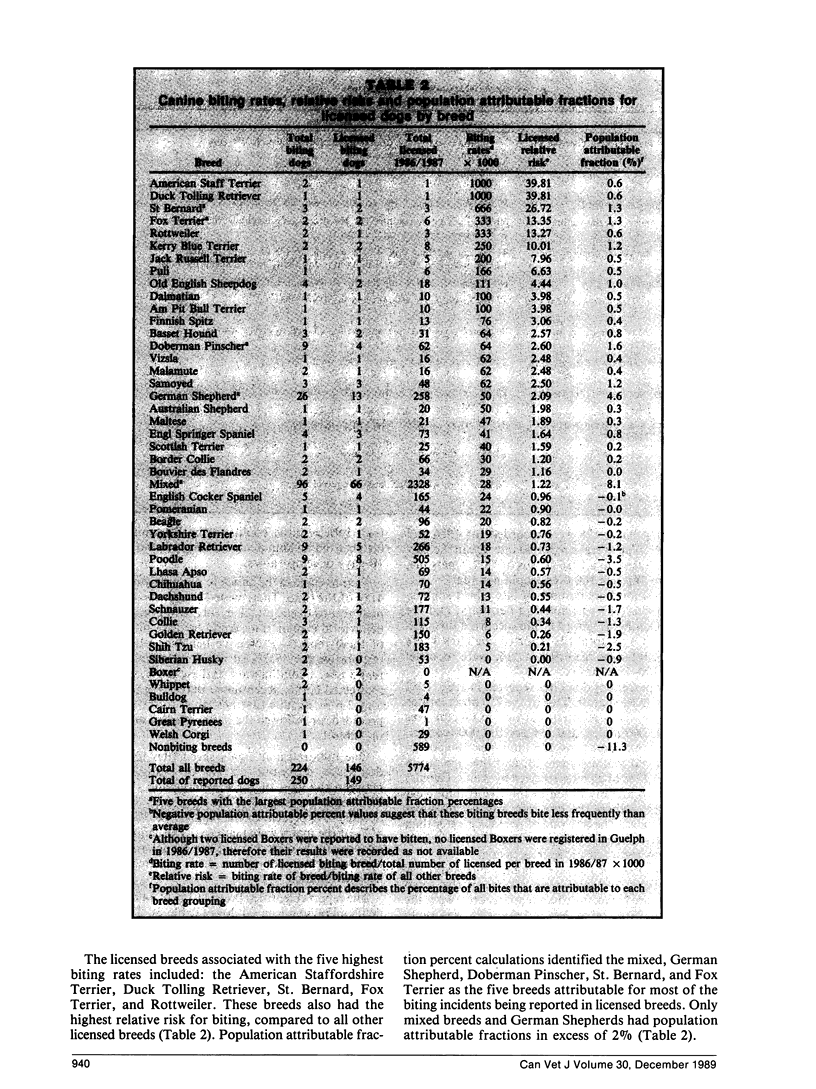
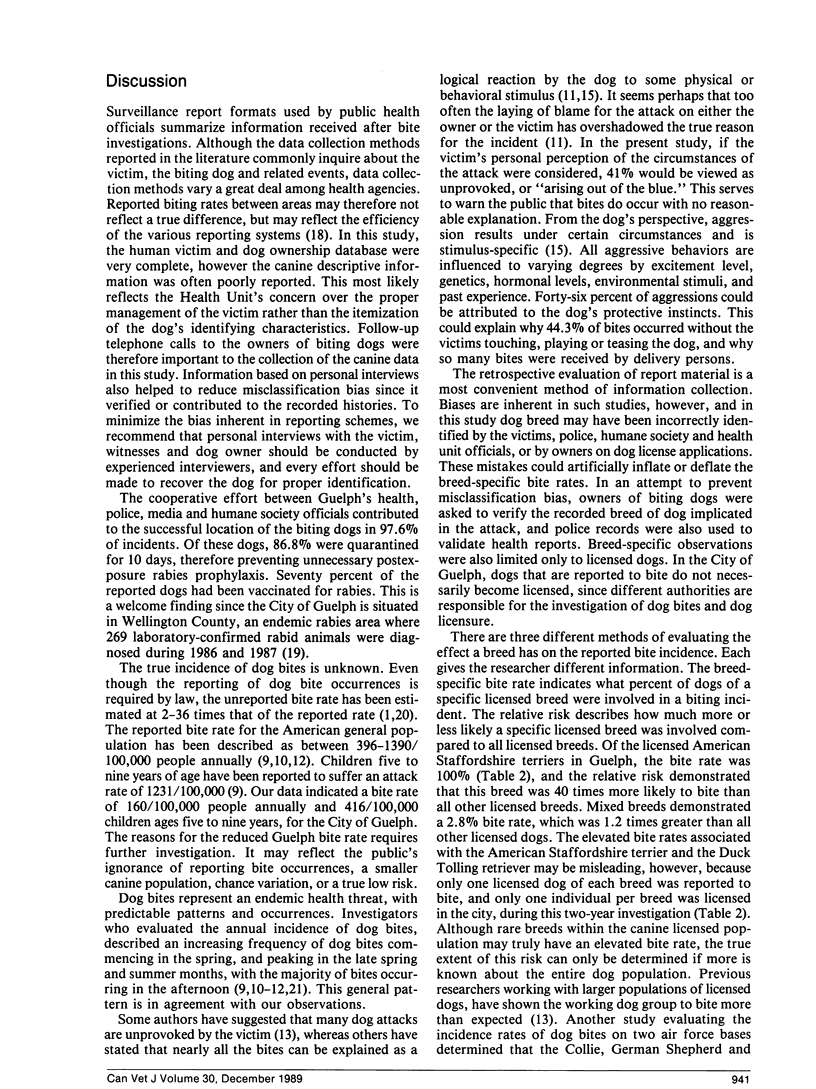
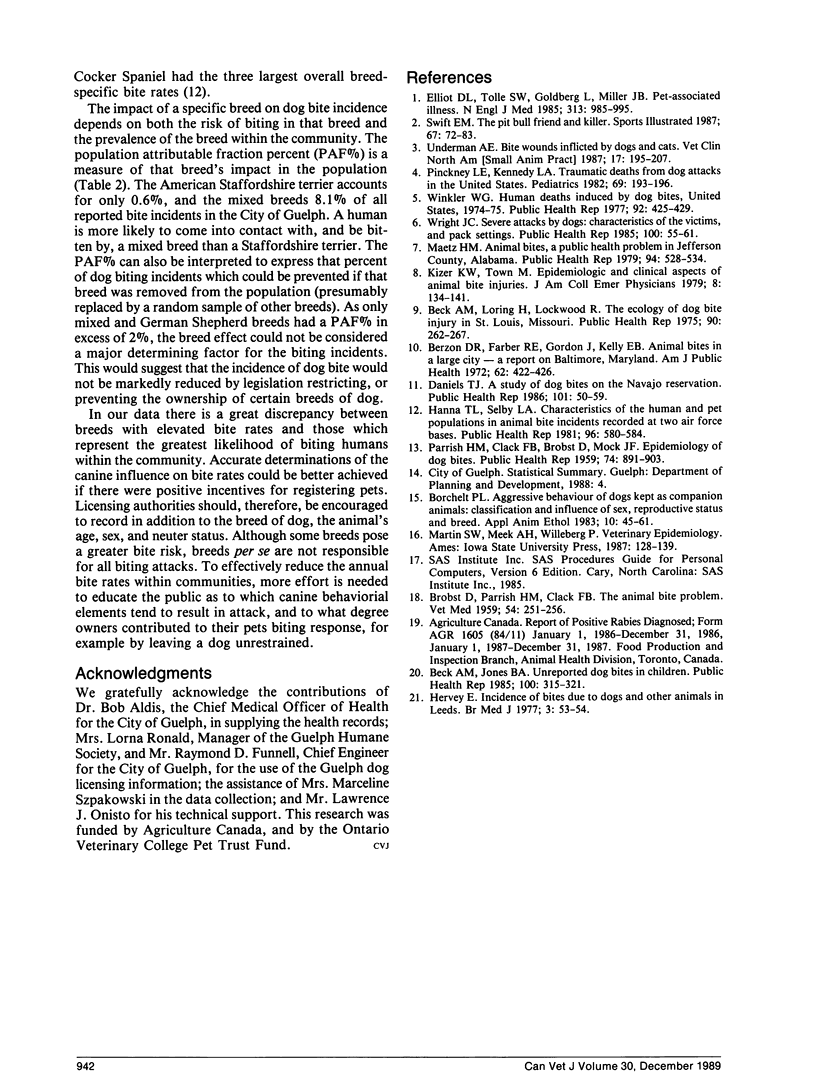
Selected References
These references are in PubMed. This may not be the complete list of references from this article.
- Beck A. M., Jones B. A. Unreported dog bites in children. Public Health Rep. 1985 May-Jun;100(3):315–321. [PMC free article] [PubMed] [Google Scholar]
- Beck A. M., Loring H., Lockwood R. The ecology of dog bite injury in St. Louis, Missouri. Public Health Rep. 1975 May-Jun;90(3):262–267. [PMC free article] [PubMed] [Google Scholar]
- Berzon D. R., Farber R. E., Gordon J., Kelley E. B. Animal bites in a large city--a report on Baltimore, Maryland. Am J Public Health. 1972 Mar;62(3):422–426. doi: 10.2105/ajph.62.3.422. [DOI] [PMC free article] [PubMed] [Google Scholar]
- Daniels T. J. A study of dog bites on the Navajo reservation. Public Health Rep. 1986 Jan-Feb;101(1):50–59. [PMC free article] [PubMed] [Google Scholar]
- Elliot D. L., Tolle S. W., Goldberg L., Miller J. B. Pet-associated illness. N Engl J Med. 1985 Oct 17;313(16):985–995. doi: 10.1056/NEJM198510173131605. [DOI] [PubMed] [Google Scholar]
- Hanna T. L., Selby L. A. Characteristics of the human and pet populations in animal bite incidents recorded at two Air Force bases. Public Health Rep. 1981 Nov-Dec;96(6):580–584. [PMC free article] [PubMed] [Google Scholar]
- Kizer K. W. Epidemiologic and clinical aspects of animal bite injuries. JACEP. 1979 Apr;8(4):134–141. doi: 10.1016/s0361-1124(79)80339-1. [DOI] [PubMed] [Google Scholar]
- Maetz H. M. Animal bites, a public health problem in Jefferson County, Alabama. Public Health Rep. 1979 Nov-Dec;94(6):528–534. [PMC free article] [PubMed] [Google Scholar]
- PARRISH H. M., CLACK F. B., BROBST D., MOCK J. F. Epidemiology of dog bites. Public Health Rep. 1959 Oct;74:891–903. [PMC free article] [PubMed] [Google Scholar]
- Pinckney L. E., Kennedy L. A. Traumatic deaths from dog attacks in the United States. Pediatrics. 1982 Feb;69(2):193–196. [PubMed] [Google Scholar]
- Underman A. E. Bite wounds inflicted by dogs and cats. Vet Clin North Am Small Anim Pract. 1987 Jan;17(1):195–207. doi: 10.1016/s0195-5616(87)50612-x. [DOI] [PubMed] [Google Scholar]
- Winkler W. G. Human deaths induced by dog bites, United States, 1974-75. Public Health Rep. 1977 Sep-Oct;92(5):425–429. [PMC free article] [PubMed] [Google Scholar]
- Wright J. C. Severe attacks by dogs: characteristics of the dogs, the victims, and the attack settings. Public Health Rep. 1985 Jan-Feb;100(1):55–61. [PMC free article] [PubMed] [Google Scholar]


